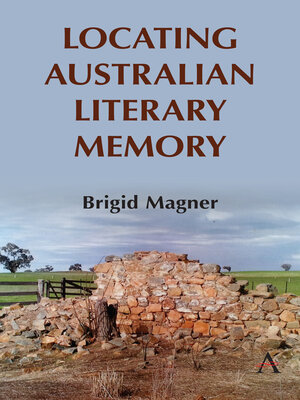Locating Australian Literary Memory
ebook ∣ Anthem Studies In Australian Literature and Culture
By Brigid Magner

Sign up to save your library
With an OverDrive account, you can save your favorite libraries for at-a-glance information about availability. Find out more about OverDrive accounts.
Find this title in Libby, the library reading app by OverDrive.



Search for a digital library with this title
Title found at these libraries:
| Library Name | Distance |
|---|---|
| Loading... |
'Locating Australian Literary Memory' explores the cultural meanings suffusing local literary commemorations. It is orientated around eleven authors – Adam Lindsay Gordon, Joseph Furphy, Henry Handel Richardson, Henry Lawson, A. B. 'Banjo' Paterson, Nan Chauncy, Katharine Susannah Prichard, Eleanor Dark, P. L. Travers, Kylie Tennant and David Unaipon – who have all been celebrated through a range of forms including statues, huts, trees, writers' houses and assorted objects. Brigid Magner illuminates the social memory residing in these monuments and artefacts, which were largely created as bulwarks against forgetting. Acknowledging the value of literary memorials and the voluntary labour that enables them, she traverses the many contradictions, ironies and eccentricities of authorial commemoration in Australia, arguing for an expanded repertoire of practices to recognise those who have been hitherto excluded.
|'Locating Australian Literary Memory' explores sites which are explicitly connected with Australian authors through material forms of commemoration such as houses, graves, statues and assorted artefacts. The focus is on eleven Australian authors – Adam Lindsay Gordon, Joseph Furphy, Henry Handel Richardson, Henry Lawson, A. B. 'Banjo' Paterson, Nan Chauncy, Katharine Susannah Prichard, Eleanor Dark, P. L. Travers, Kylie Tennant and David Unaipon. Each of these writers offers different perspectives on the conventions of literary commemoration from the nineteenth century onwards.
Australian heritage terrain has been thoroughly mapped by nationalist heritage practices which may no longer relate to contemporary values. As elsewhere, the focus is moving towards a greater recognition of the contributions of women authors, migrants, expatriates and First Nations peoples. There is an often unacknowledged dissonance between imported modes of commemoration and the unceded lands onto which they have been introduced. The designation of 'author countries' is especially problematic in a postcolonial context because it 'overwrites' Indigenous Country, obscuring it from the view of non-Indigenous Australians.
Rather than advocating for the creation of more literary monuments, or the further preservation of memorials that currently exist, 'Locating Australian Literary Memory' seeks to reveal the many blind spots, contradictions, challenges and eccentricities of literary commemoration in Australia. While observing the value of literary memorials and the voluntary labour that enables their construction, this book argues for an expanded repertoire of practices to recognise authors and storytellers who have been hitherto overlooked.







